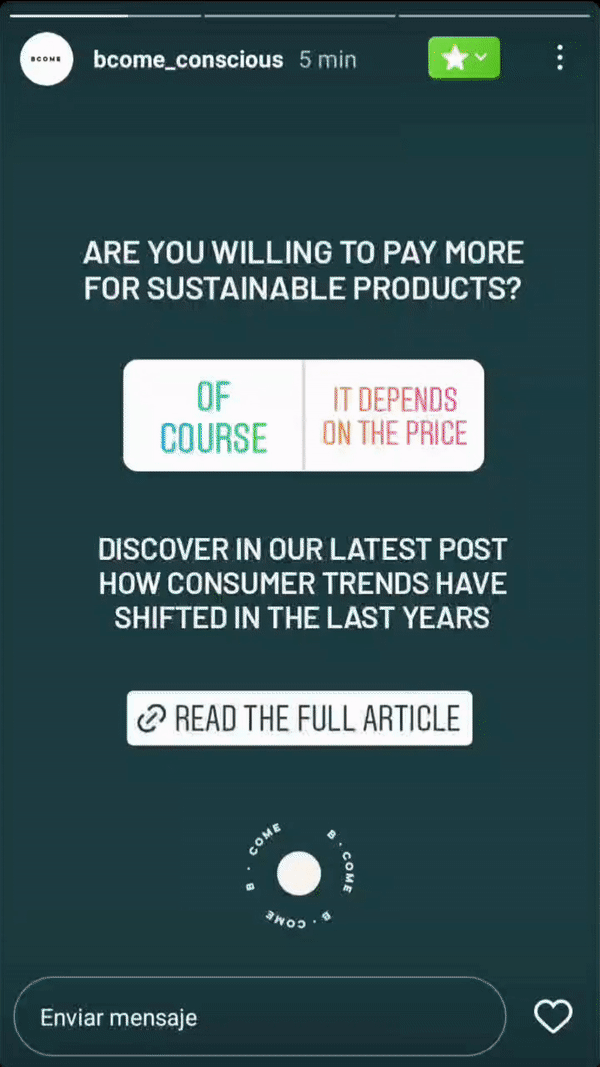For more than a decade, social media has gained more and more relevance to become an essential communication channel for the fashion industry. From the discovery of new brands, the dissemination of trends or the relevance that the so-called “fashion influencers” have gained, they’ve made social media “the place to be” for any business that seeks to find its place within the textile sector. But, who is leading the speech on sustainable fashion on social media? Is there valuable content that includes this concept in the conversation or is it all greenwashing? In the era of “likes” we talk about the role of social platforms to promote your message about sustainability.
The latest The State of Fashion report reveals that 74% of consumers say their purchases are more influenced by social media than before the pandemic. If we also take into account that Generation Z spent an average of 8 hours a day in front of screens during 2020, it’s clear that sustainability must be present wherever the segment of the population that is willing to pay more for sustainable products spends time.
74% of consumers say their purchases are more influenced by social media than before the pandemic
While hashtags like #slowfashionmovement or #upcycling gain visibility on TikTok and Instagram, most mentions continue to rhyme with fast fashion brands. It’s essential that the firms with a genuine intention to improve their performance in sustainability are the ones who lead the discourse of the transformation of the fashion industry through the media. Now, more than ever, we must take advantage of the closeness that social platforms provide us to offer valuable content that allows consumers to learn about sustainability and get involved in this great change.
Using social media as a channel through which to communicate clearly and honestly is a very powerful resource in overshadowing greenwashing from brands that make false or misleading claims in order to create a favorable image. On the other hand, transparent communication will also allow you to provide tools to your community so that they more easily identify which projects are carrying out unfair practices.
Here are six tips for engaging your community in the sustainability conversation and leading the conversation on social media:
- Keep it social. Generate conversation with your audience and make them participate and interact in the dialogue about sustainability. This will allow you to detect those topics that are of greatest interest to your audience, as well as identify concepts that need to be reinforced in the content. The interaction tags provided by Instagram are a very powerful tool to keep direct contact with your community. This is how we use them in BCOME’s profile.

- Keep it simple. Sustainability can often be complex. Translate those concepts that are more difficult to understand into a language that everyone can read. At BCOME we use equivalences to translate the impact of our clients into more tangible units. This is how some brave brands like Ecoalf use them.
- Keep it attractive. Sustainability is often associated with an image that is full of soft colors, images linked to nature and other clichés that in the middle of 2022 are outdated. If your brand strays from these stereotypes, don’t be afraid to break with the preconceived image of sustainability. Stay true to your corporate identity and express yourself fearlessly. This is how GANNI does it.
- Keep it honest. Avoid greenwashing by providing data that offers rigor to your message. Social media is created to break down barriers with your audience, provide valuable information and show that you speak from the truth when indicating the work that your brand is developing in terms of sustainability. The annual reports shared by Thinking MU are a great example.
- Keep it transparent. Show your audience what they don’t have the opportunity to see through other channels. Take them wherever you have the opportunity to show everything that isn’t seen behind the product. With its “Real transparency” campaign, Asket has decided to install cameras throughout their Headquarters to eliminate information asymmetry in the fashion industry.
- Keep it constant. Talk about sustainability frequently, have an ongoing conversation on this topic with your audience. It’s the only way to show that you have an authentic commitment as a brand. Demonstrate consistency by referring to your values even when you’re not specifically talking about your product. Through shared content, Saye seeks to create a reflection that goes beyond the brand.
@sayebrand New post on our blog, have you checked it out????? #SAYE #fyp #parati #viral #sustainability #aprendeentiktok #learnontiktok ♬ Cornfield Chase – Dorian Marko
The work your business is doing to stay true to its values in every business decision is an effort that deserves to be shared with your audience. It’s time to own your sustainability narrative and show that you have a story to tell.
At BCOME we support our brave brands by creating a roadmap that allows them to more easily identify when to communicate, what messages, where and how to do it in order to take advantage of all the opportunities that their sustainability data offers them. Do you want to value the speech of your brand? We can help you!





